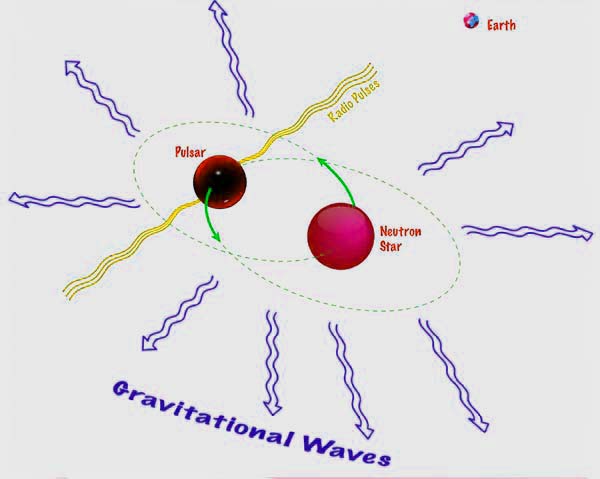Hulse-Taylor pulsar

The Hulse-Taylor pulsar (PSR 1913+16) is a binary pulsar found in 1974 by the American physicists Russell Hulse and Joseph Taylor of Princeton University, a discovery for which they shared the 1993 Nobel Prize in Physics. It consists of a pulsar (a neutron star) with a pulsation period of 59 milliseconds (equal to 17 pulses per second) and a companion that move around each other in an elongated orbit (period 7.75 hours, periastron 1.1 solar radii, apastron 4.8 solar radii). Although the nature of the companion is not known for certain, it is thought to have the same mass as the pulsar (1.4 solar masses) and so is probably also a neutron star. The orbit is gradually shrinking, by about 3.1 millimeters per orbit, because of gravitational waves as predicted by the general theory of relativity. This will cause the two stars to merge – about 300 million years from now.
The extreme density and small orbital radius of this system results in a huge orbital precession of 4.2° per year, exactly in agreement with the value predicted by the general theory of relativity. Indeed, PSR 1913+16 has proved to be a rich testing-ground for gravitational theories. One interesting aspect is that the period of the orbit is gradually shortening as the pulsars spiral towards each other. This implies a loss of energy, similar to that of an artificial satellite as its orbit gradually decays due to atmospheric drag; the rate at which the decay is happening is consistent with the radiation of energy via gravitational waves, again as predicted by Einstein's theory.


